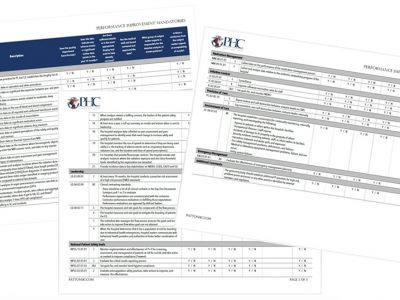A recent Perspectives column discusses PI.01.01.01, EP 4. It requires hospitals to collect data on significant discrepancies between preoperative and postoperative diagnosis.
Discrepancies Between Preoperative And Postoperative Diagnosis
TJC indicates they scored only 0.78% of organizations deficient on this EP. Further, they discuss EP 5 which requires the collection of data on adverse events related to moderate or deep sedation. Again, the percentage of organizations scored deficient is low at 0.64%. In fact, these infrequent findings may in reality be somewhat higher as we often see gaps in our preparatory surveys.
There is often a huge book of PI data. Moreover, the total amount of information appears overwhelming at times. This limits your ability to identify gaps in completion of requirements.
But, the Joint Commission’s PI expectations always include two tracks:
- The mandatory PI expectations described in the standards
- Organizational identified priorities chosen from their high risk and problem prone processes
Review Consistent Interpretation
Take time to review the Consistent Interpretation column. It offers suggestions the TJC provides on some issues which should be (1) reported and (2) analyzed for these two elements of performance. We see two critical functions,
- Data collection
- Data analysis
In fact, data analysis may be the more important of these two issues. In the past year, multiple media stories have discussed data collection, but with a failure to identify adverse trends in the analysis phase.
Moreover, the essential and difficult part of the PI process is identifying potential adverse trends so that you can analyze possible causation and seek to improve the results.


 Family Visits During COVID-19
Family Visits During COVID-19
Leave a Reply